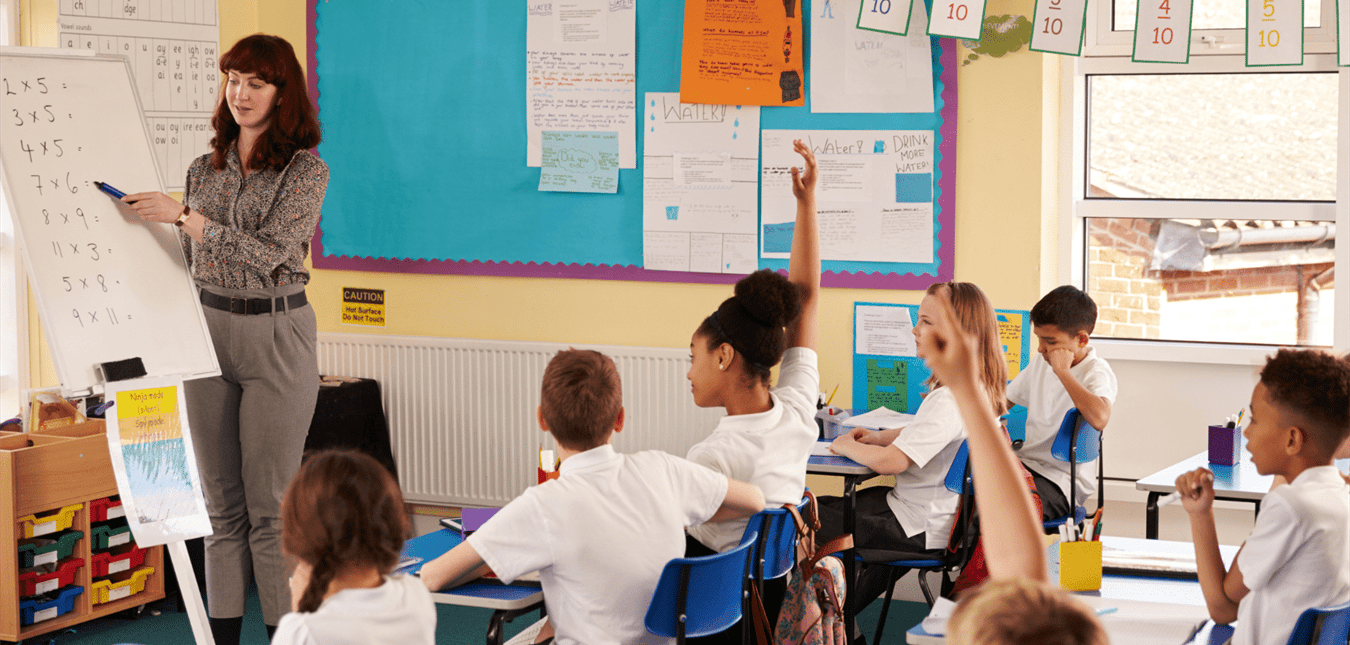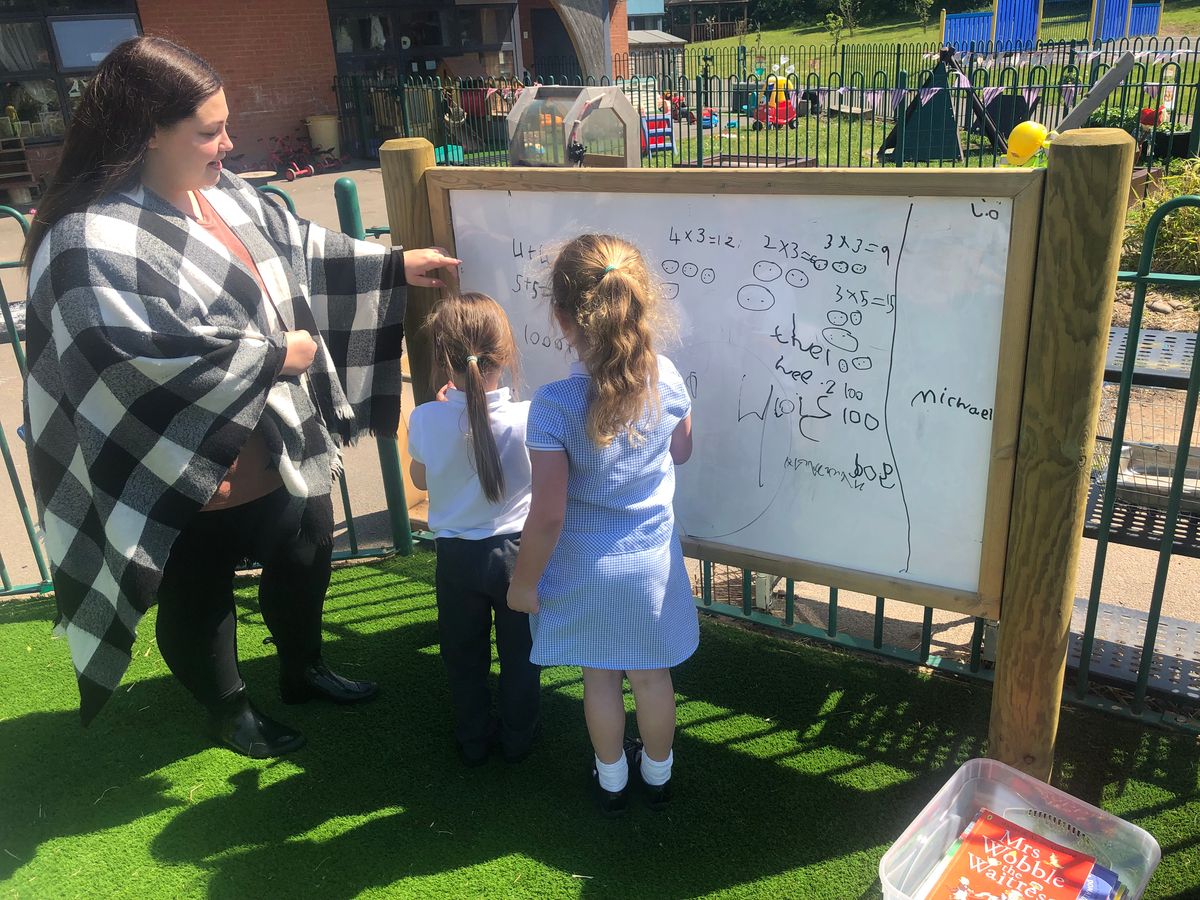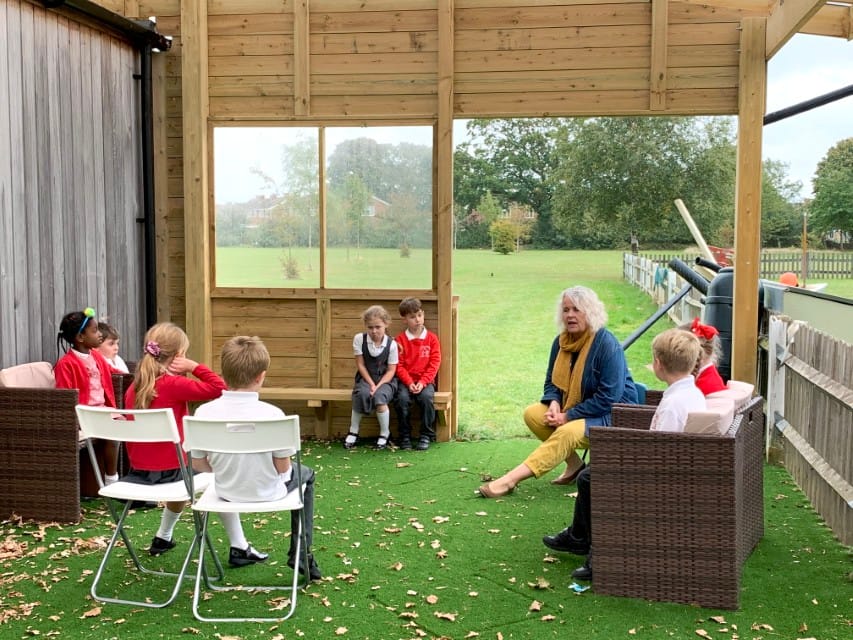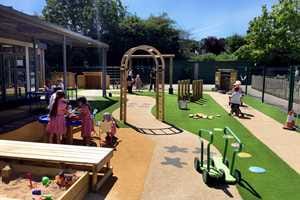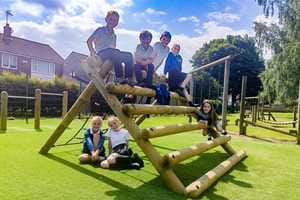
Lesson Ideas and Activities
How to Make your Lessons More Engaging
Positive engagement in learning is what all educators strive for. As a teacher you can feel when a lesson has been truly successful, there is a sense of flow and pupils are fully absorbed in their tasks. When students are deeply engaged, giving their full attention and focus they begin to develop critical thinking skills, respond to feedback and truly challenge themselves.
Every class and every day is different yet there are actions we can employ in order to create high levels of student engagement. This blog will touch upon research and suggested strategies in order to create lessons which just seem to 'flow.'
Find the Right Level of Challenge
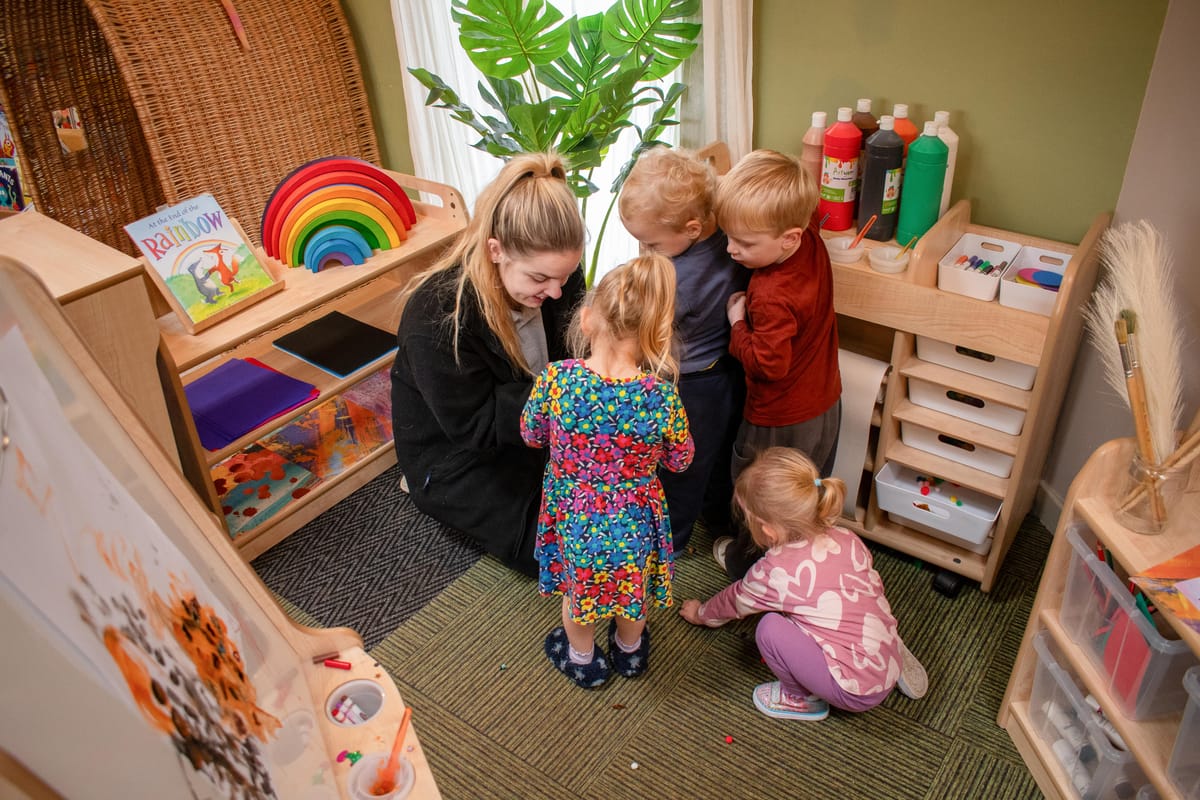
In order to engage students, educators need to find the right level of challenge. Differentiation is important in helping children to make rapid and sustained progress. Useful strategies to challenge learners may include:
Using Journals
Journals can be a place for students to record problem solving strategies, to reflect on the learning process or to summarise the main lesson objectives. Journals can provide opportunities for students to explain, justify and prove their thinking through writing and illustrations. Journaling can help to support confidence in writing, boost memory and improve regulation and mood.
Learning Grids
Learning Grids devised by Stephen Bowkett are grids of 6x6 numbered squares which contain topic-specific words and pictures. When using the grids children develop curiosity and are faced with a challenge. Working together in pairs or small groups children can select words and images using random dice rolls. Working in this way, children are able to create a narrative line in order to plan a story.
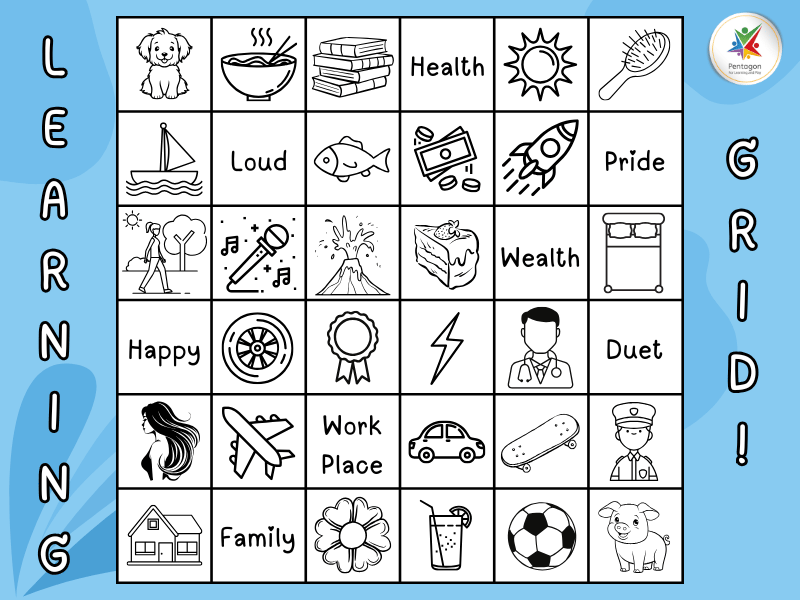
Students will be able to manipulate vocabulary in meaningful ways, forging new links and making fresh connections between previously unrelated ideas. To increase the challenge of the activity further vocabulary can be added around the grid for children to include.
Learning grids can be adapted to suit many topics and subject areas and offer opportunities for collaboration and peer teaching. Grids can be easily made more or less challenging by altering language and images used.
Use Graphic Organisers to Represent Ideas
Graphic Organisers allow for the visual processing of concepts and show how ideas connect. Students who need extra support can be provided with a graphic organiser such as sequence chart, concept map or a KWL chart showing what you Know about a subject, what you Want to find out and what you have Learnt. Children who need to be challenged could develop their creative thinking by designing their own graphic organiser.
Use a Tarsia Jigsaw
Tarsia Maker is a free piece of software which allows you to easily create jigsaws of various shapes and sizes. Tarsia jigsaws are incredibly versatile and can be used for many different topics with learners of differing abilities. The jigsaws grab students attention and promote group work and discussion which can be an ideal way to revise or consolidate a topic.
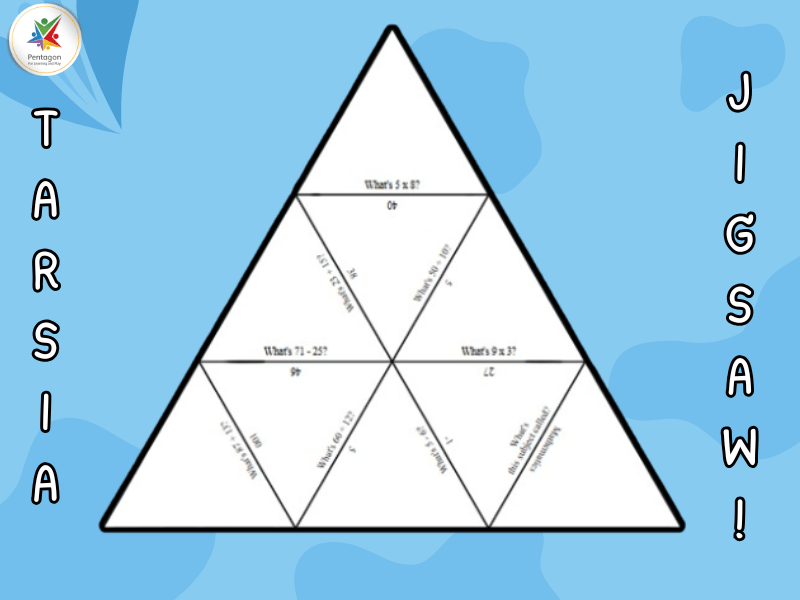
Students need to match up the sides of the jigsaw pieces which correspond to each other in some way. Tarsia jigsaws increase student engagement as children want to independently complete the puzzle. Jigsaws can be differentiated by using simpler shapes, using images instead of descriptions or leaving some spaces blank and asking students to identify possible solutions. Pupils could even create their own puzzles as a useful learning or revision activity.
How to Cope with 'Being Stuck'
We need to explicitly teach students what to do when they're stuck in order to provide them with a greater chance of doing the right thing. Children need to understand that being stuck is a necessary and normal part of learning which we must all work through. However, spending too long being stuck is not a good state for a child to be in as they can soon get frustrated and disillusioned.
- Ask Three Before Me - This technique simply involves children asking three classmates nearby before asking the teacher if they are busy working with another group/pupil.
- Brain, Book, Board, Buddy, Boss - encourages children to consult three sources such as a book, the board or a friend and if still stuck to then consult a teacher.
Students need to have clear guidelines for what to do when they are stuck such as: break the question down into smaller parts, try another question and come back to that one later, have a go on whiteboards first, highlight key words or difficult parts or consult working walls and classroom displays. Learners are therefore encouraged to try a range of strategies and encouraged not to give up.
Minimise Teacher Input
As a teacher I know first hand that we all love to talk in the classroom! However teacher talk can actually hinder children's acquisition of knowledge and skills.
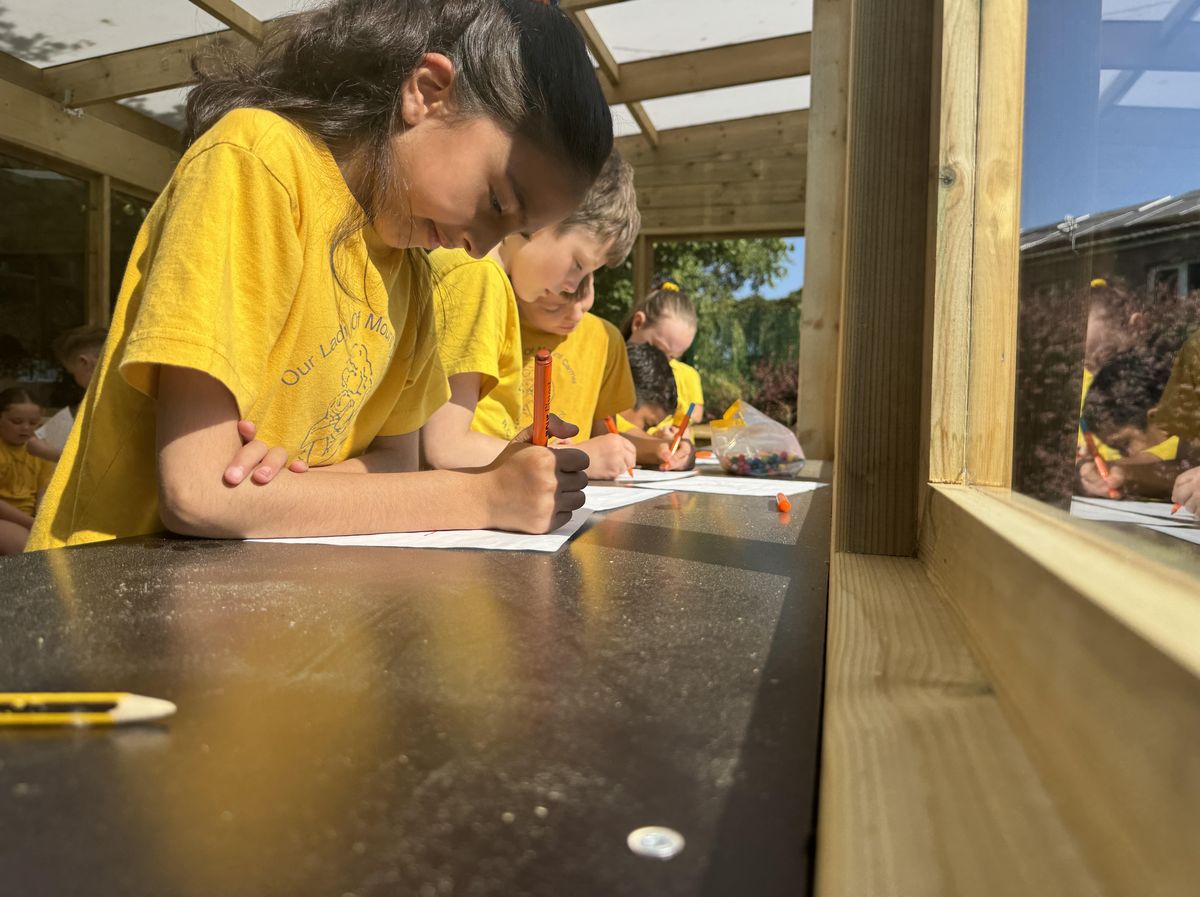
Teachers can plan and structure their lessons so that there are many opportunities for pupils to work either individually or collaboratively. Depending on the nature of the lesson and the stage of a teaching sequence teachers can create 30:70 lessons whereby 30% of the lesson is teacher led and in the remaining time the students lead their own learning through independent work.
Group Work Strategies
- Small groups can be given different aspects of a new topic to learn about or they can perhaps explore a situation from a different point of view. It is important to set clear time goals so that time can be manged effectively.
- Groups will need research time, perhaps a word limit could be set and children should be told how they can present their work whether as a poster using symbols, diagrams or pictures etc. All members of the group must contribute to the research and creation of a poster/presentation. Using their poster/presentation one member of the group must teach their content to other students in the class. A different member from the group visits the other class teams and makes notes about the new content being delivered.
Each group re-forms and explains what they have learnt from the other teams. The class teacher may set a quiz about the topic to encourage friendly competition and communication between the groups.
'Jigsaw' Technique
The idea behind this technique is that students teach themselves and then teach others. Students can be organised into a set number of groups and number themselves 1,2,3,4 etc. All of the number ones will gather round a workstation and the number twos around another station and so on.
Workstations will contain all of the necessary learning resources needed. Using set resources given, pupils will learn about a specific area for example when learning about 'Materials' in science each group may learn about a different materials such as wood, paper, plastic, glass.
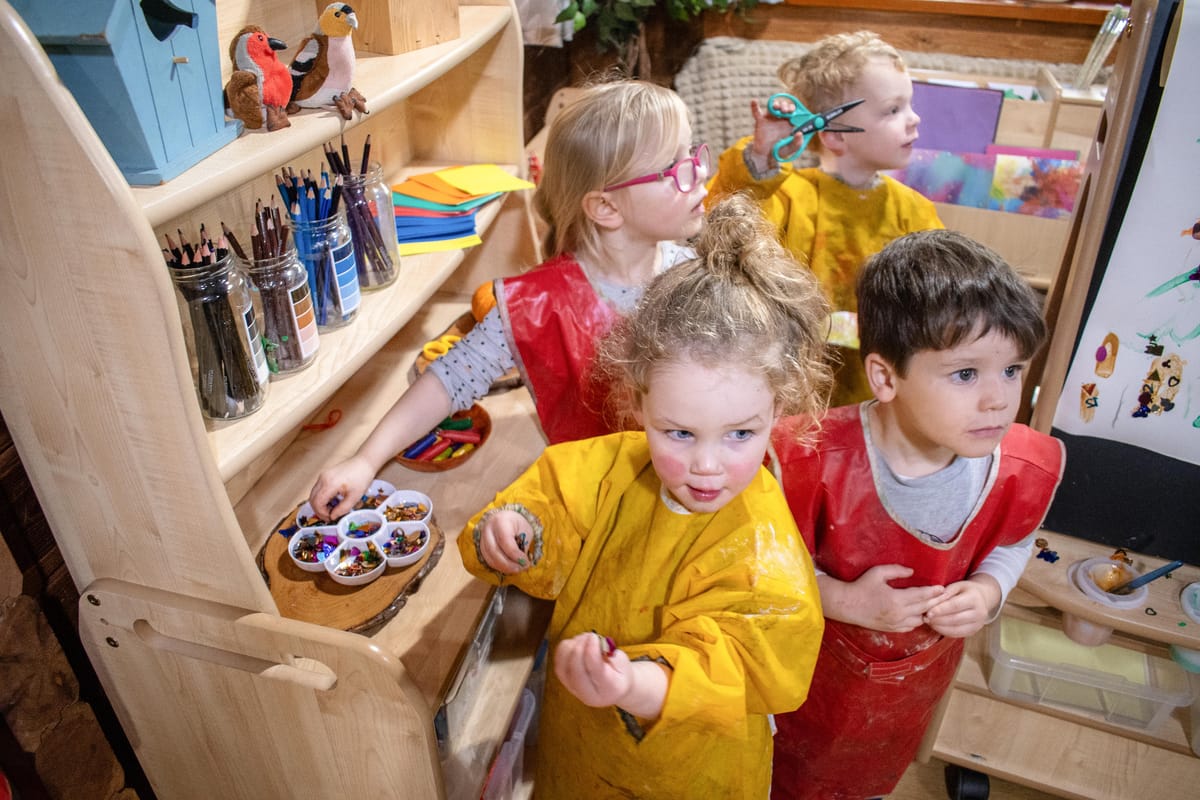
Students need to be confident enough to go back and teach others in their group. Class teachers will have time to monitor and work with students at each workstation.
Pupils return to their 'home' group where they take it in turns to tell their group what they have learnt. Teachers can monitor and challenge where appropriate. Classes can then reflect on progress made and difficulties encountered.
Set Effective Goals
One effective technique for goal setting is to use the SMART approach (Specific, Measurable, Achievable, Relevant, Time- bound.) This approach creates realistic, measurable goals.
Students need to be clear about what they are doing and why they are doing it. It is helpful if they can see the bigger picture within a topic and understand that each small goal will lead to improvements in a subject.
Students need to be fully involved in the goal setting process. If they can explain the success criteria in their own words and know their next steps to take they will have clarity and purpose.
Aim to Offer Immediate Feedback
Giving instant feedback makes learning an active rather than a passive experience. When feedback is given at a relevant moment learners can absorb and act on it there and then whilst it is at the forefront of their minds.
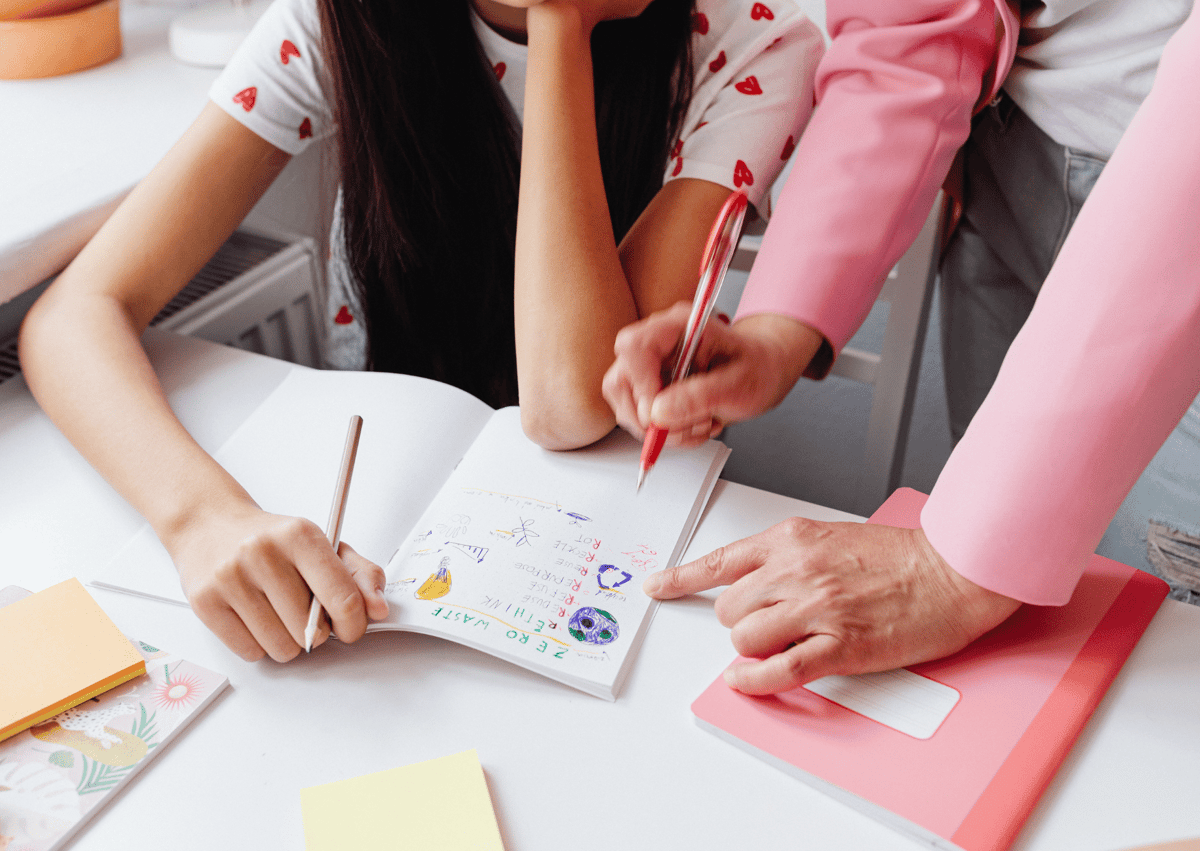
It would be extremely difficult for a class teacher to offer verbal feedback to 30 students within a lesson, therefore being able to self-assess and peer-assess accurately promotes ownership and engages students.
Tasks are Intrinsically Motivating
All educators want their pupils to have a love of learning and not just learn for the sake of doing so. We want our students to enthusiastically take part and contribute because they enjoy what they are doing. Ways of achieving this include:
Building Positive Relationships with Pupils
Establishing effective relationships with the entire class can be key when it comes to self-motivated learning. When relationships and respect are established there are fewer behaviour issues in the classroom. Teachers can:
- Get to know your students - Ask students a set of questions at the start of the academic year to find out about their likes/dislikes, hobbies and learning styles.
- Be consistent - Set clear expectations and boundaries and follow up what you say you will do.
- Show your pupils that they are respected - aim to develop trust, good manners and courteous behaviour
Build Competency
Provide feedback and support to let students know what they are doing well. Highlight what a student has already achieved and encourage reflection to make improvements to their work. Having a checklist of skills which teachers highlight/place a sticker on once a child has achieved a set goal can be motivating.
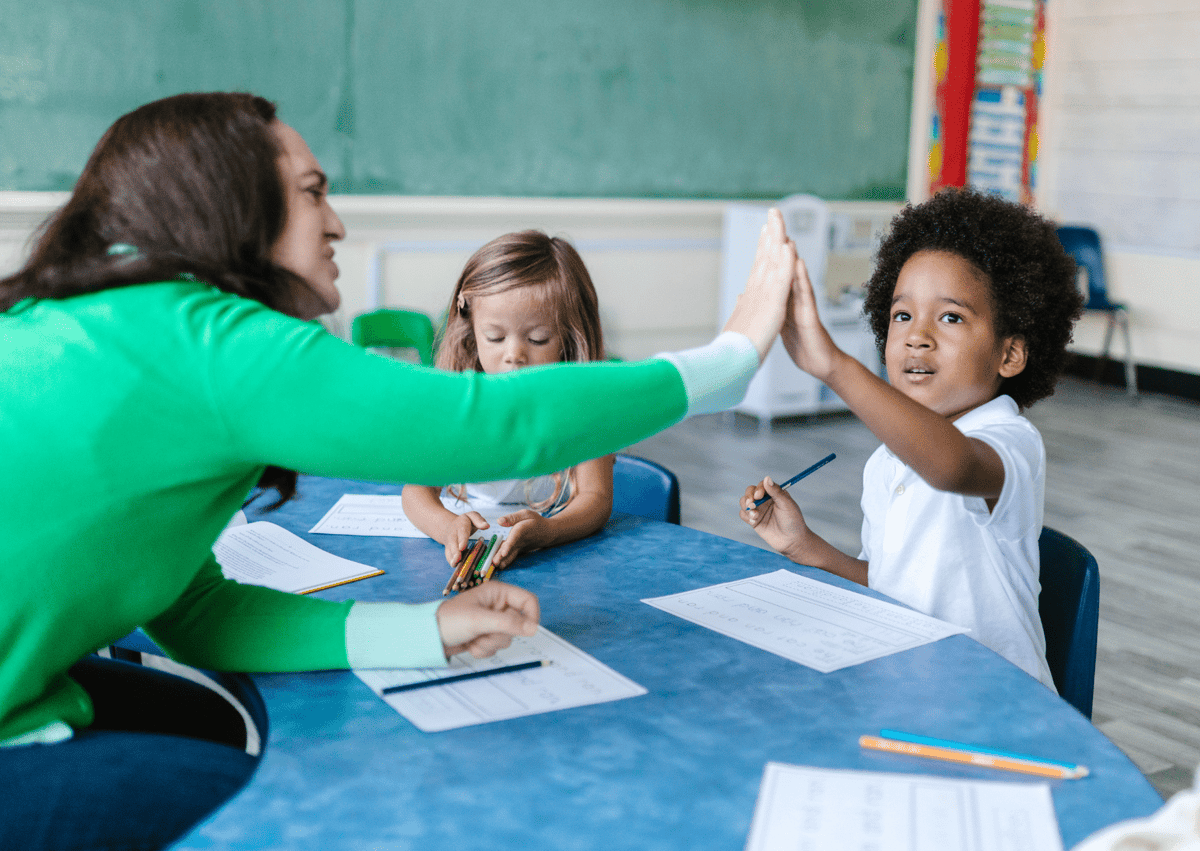
Help pupils to develop a growth mindset and to feel relaxed about sharing their errors and mistakes. Positive praise such as notes home to caregivers, praising a students process and using 'wow' words such as fantastic, great, brilliant when students are working at their hardest can help to make real improvements and increase student engagement.
Foster Curiosity
Curiosity is key to learning. When we are curious about a subject, we are much more likely to remember information we learned about that subject.
Promoting curiosity encourages students to ask questions. My own daughter fondly recalls entering school one morning to find dinosaur prints and a classroom in chaos! She was asked to discover which dinosaur could have possibly visited and to write a report about it.
Mysterious objects and artefacts can be used to promote curiosity and discussion. Children will want to carry out an initial investigation of objects noting material, texture and colour. Students can then pose questions and seek answers through further observation, research or reference to previous learning. Classes can often be fascinated by a single object such as an old inkwell or a fossil.
Curiosity can also be built through prediction by stopping a story, video or experiment and asking pupils what they think will happen next.
Encourage Imaginative Responses
Story writing can be a natural way to stretch imagination. Student engagement will be high when asked to write about objects in strange or unexpected places.

An unusual or interesting picture can be a great stimulus to start writing or perhaps there is a problem that needs to be solved in a different place maybe even on another planet! Children will soon start collaborating with each other, sharing ideas, drawing, writing and making plans.
Make Lessons Relevant
One key way to encourage intrinsic motivation when lesson planning is to make lessons relevant to students' lives, particularly for any learner who is thinking 'Why do I need to know this?'
Lessons which encourage students to make a difference in their community can have a big impact. I fondly remember a class writing powerful, well-considered letters to council members about the closure of the local library.
Lesson activities which appeal to students interests and offer real life examples increase student engagement. I remember allowing students to work within a budget to plan the food and drink required for their end of year party! When learning is seen as practical and worthwhile it becomes a more personalised experience for pupils.
It can be beneficial to start from the children's own experiences. I once challenged a class to conduct some experiments to find the best biscuit for dunking to include at the next school coffee morning! Pupils took great interest in their scientific work and did not want to stop their learning.
Creating Challenge
In order for students to achieve their full potential an element of challenge is essential. Challenge can be in the degree of difficulty of a learning activity, it may also involve competition or working with others.
.jpg)
Some students thrive on friendly competition which can lead to higher motivation and success. With firm expectations and boundaries pupils can enjoy digital games and quizzes such as Blooket. Students may enjoy class vs. class or school vs. school competitions.
Relay races where students are required to find correct answers or feedback ideas to their groups can build perseverance and foster flow.
Asking pupils to work together in a small group to present plenary sessions can be a useful challenge in order to check levels of understanding.
Offering Choice
Giving real choices in the classroom can boost student engagement and motivation. Choice is not about opting in or out but rather how learners will take ownership of their learning.
Pupils may choose which set of questions they will start with, apparatus they may need to help them to solve a task or how they present their work for example as a poem, rap, poster or persuasive argument.
Teachers may also allow students to choose work partners, seating arrangements or homework tasks. When children feel they have a sense of control over what they are doing they may feel more engaged.
Make it Fun
There should always be an element of fun within a classroom as this helps to create positive relationships. Laughter and fun can actually aid learning and improve memory.
Children often enjoy spotting deliberate teacher mistakes. A paragraph of topic information could have blank/forgotten words throughout it. Pupils can have fun reading the paragraph out as it is and then try to identify the blanks, could the missing word be a noun/verb/adjective?
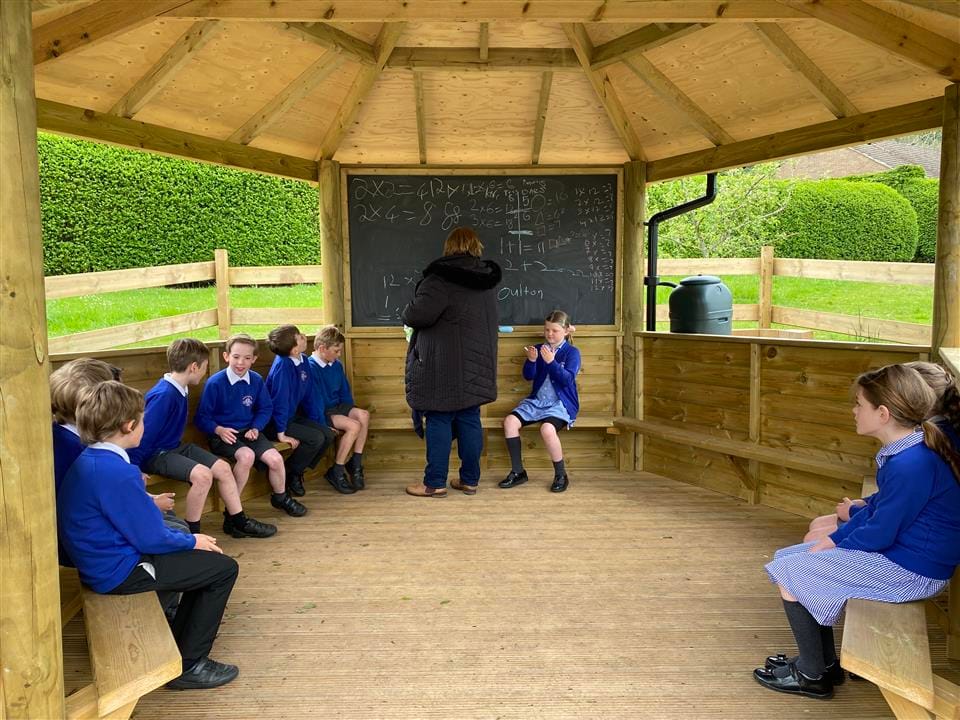
Students may also enjoy putting their teacher in the hot seat. Children love watching their teacher 'playing the fool' when dressing up and taking on the role of a known character to answer pupil questions.
Create a Playful Classroom
A playful classroom is one in which teachers provide meaningful experiences for students promoting trust, collaboration and growth. Playful strategies encourage students to be creative and to explore and interact with their learning.
Playful Ways of Getting Attention
When teachers want to give out instructions for a task or to stop children it can be more effective to do something playful rather than raising voices and commanding children to listen. Teachers need variation in strategies used to gain attention which could include:
- Rhythmic Clapping - teachers can clap a set pattern which children can clap back. This signals that it's time to look at the teacher and pay attention.
- Copy Me - a teacher will stand in front of the class and quietly play a 'Simon Says' type game giving instructions and carrying out an action e.g. touch your nose, pat your head. All children will join in and eventually the teacher will give an instruction but the children will carry on following the teacher actions which will be different. Some students may be caught out!
- Call and Respond - when it comes to picking call and responses teachers can draw inspiration from anywhere in life from popular songs to sports chants or onomatopoeia. Examples include: Teacher: Hocus Pocus! Class: Everybody Focus! Teacher: Banana Split! Class: I know how to sit!
- Emergency Stop (used sparingly!) - sometimes we need a quick attention grabber to explain a simple instruction such as please use your pens and not your pencils. This could involve the use of an instrument such as a bell or perhaps a short timer displayed on the board.
3- Minute Motivators
The phrase '3-Minute Motivators' was devised by Kathy Paterson. These games help to refocus and motivate groups whilst also making learning fun, building cooperation, communication and thinking skills.
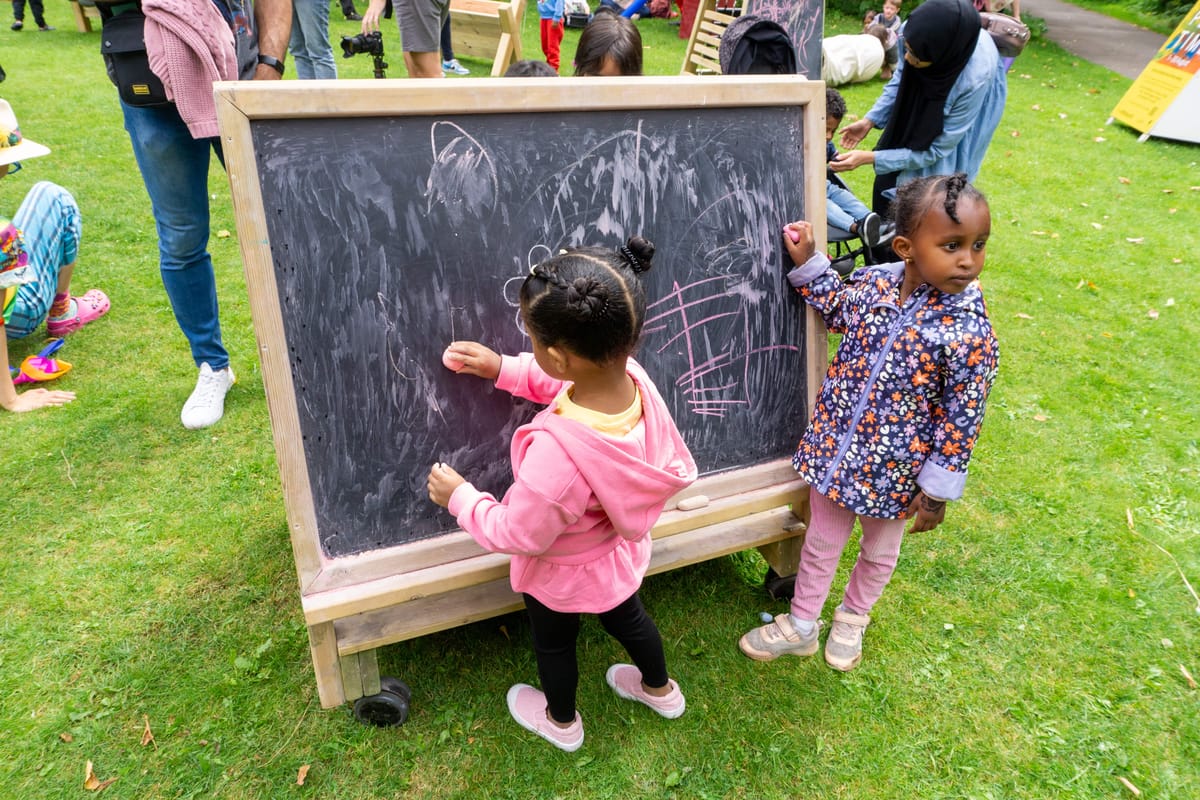
Different playful games can be used to wake up lethargic minds, introduce or revise new concepts and to engage or re-engage students. Examples include:
- Brain Tennis - In pairs or small groups play Brain Tennis. Teachers start each pair off with a keyword related to a current topic. Taking turns each player/team has to come up with a connecting word relating to the previous/word topic. Any repetition, deviation or hesitation and a point is awarded to the other player/team.
- Pictionary - Students take turns to draw a picture and within a minute the other players try to guess what it is. Picture ideas and key words can be topic related.
- Autographs - Each pupil writes one question on a sheet relating to a class topic. Get students moving around the classroom asking their classmates their question. If classmates answer correctly they can sign the sheet. Pupils are to see how many signatures they can get within 2 minutes.
- Articulate - Teachers write a list of current key terms and concepts on the board. In pairs students are given a topic. Each student has a turn to talk about their topic for 60 seconds whilst their partner turns away from the board. Each time a key word/term is mentioned a point is awarded. This can be played competitively by splitting the class into two teams. An 'expert' can be chosen to give help when needed.
Playful Questioning
In order to create a climate of enquiry and to engage students, high quality, high order questioning must take place. Effective questioning makes thinking visible. The careful use of questions can initiate thinking and group discussion which can immediately engage students in their learning.
- If this is the answer... what is the question? - this simple technique of reversing questions can spark inquisitiveness within students.
- Thunks - Thunks devised by Ian Gilbert are highly abstract questions which require students to think creatively to provide a response. There will never be a single correct answer to a Thunk question, they are open to individual interpretation. Thunk questions can be used in relation to the topic being taught or alternatively if the aim of the lesson is to promote creative thinking, discussion and debate then Thunk questions can be used in any context. Examples include: Is your shadow part of you? If all of the books in a library were on loan would it still be a library? Can you touch a rainbow? If you read a magazine in a shop and put it back is that stealing?
- Pose, Pause, Pounce and Bounce Technique -
- Pose - Teacher poses the question for all to consider
- Pause - Teacher gives thinking time and possible discussion
- Pounce - Teacher selects who will provide the answer
- Bounce - Teacher bounces the answer from student to student developing ideas and encouraging pupils to add their views or extend the depth and breath of their answers. A ball could be used here to pass between students to add an element of fun.
Playful Ways to Support Memory
Multi-sensory strategies can help to consolidate learning and make it more memorable.
- Kim's Game can be used across a number of subjects to test children's memory. A selection of objects, numbers or words are displayed before the objects are covered up and some are removed. Children can be asked which objects have been removed.
- Matching Pairs - Cards are set out in rows and students must take turns to flip two cards at a time until all of the matching pairs have been found. This game could be used for words and their definitions, a year with an event or a maths calculation and an answer an so on. This game could be played in threes with one student checking answers.
- Memory Chain - The first pupils says a word or concept relating to the topic. The next pupil repeats the first word and adds their own, creating a chain.
Playful Presentations
When children can take what they have learned and accurately teach or explain it to someone else they show a deep level of understanding.
Asking students to explain their learning to others in quirky, humorous ways develops skills of evaluation and creativity as well as being a memorable learning experience. Ideas include:
- Design a comic strip about a topic
- Write a series of tweets relevant to the topic
- Create a board game incorporating key elements
- Create a quiz-style game show for classmate to participate in
- Make a TV or radio commercial
- Create a museum exhibit
- Create a rap or re-write a song
- Create a mini book
Children will need appropriate time to prepare their presentations. When introducing these ideas for the first time teachers will need to model and give examples of the kind of performance they are looking for. Students will need to evaluate if their performance has been informative as well as entertaining.
Some of the best teachers that I have had the pleasure of observing truly inspire and motivate their pupils. These teachers use pupils own interests, promote playfulness and humour and build respectful and trusting relationships with their pupils.
Creating an engaging environment for students increases the likelihood of them absorbing knowledge and leads to future success.
